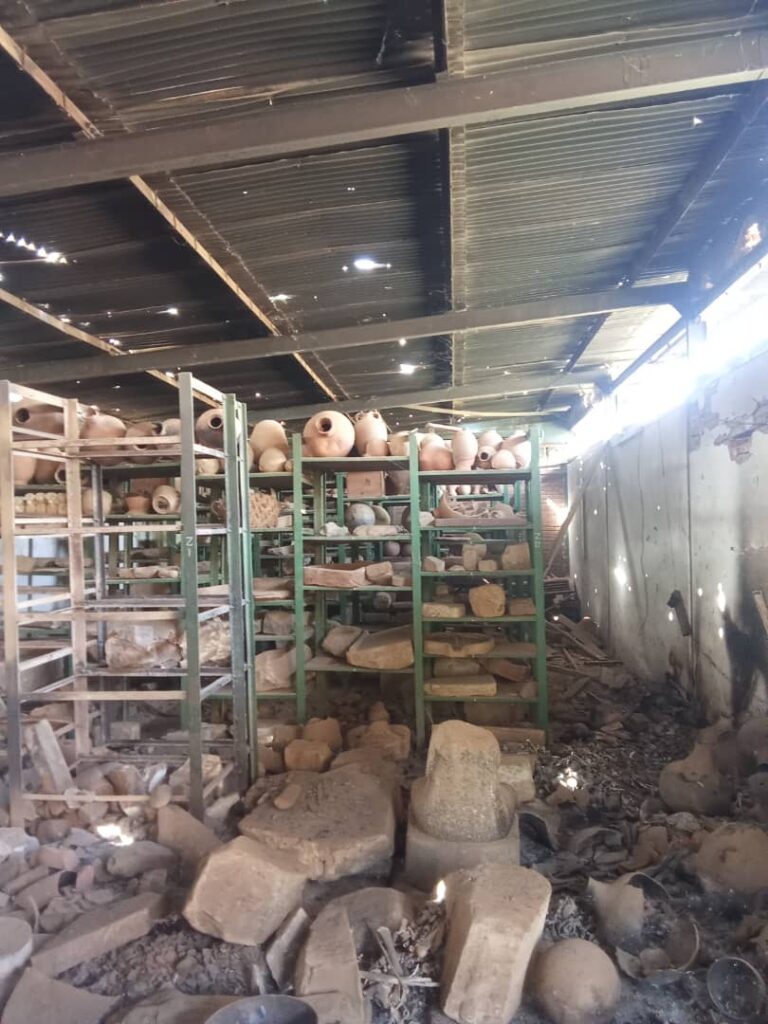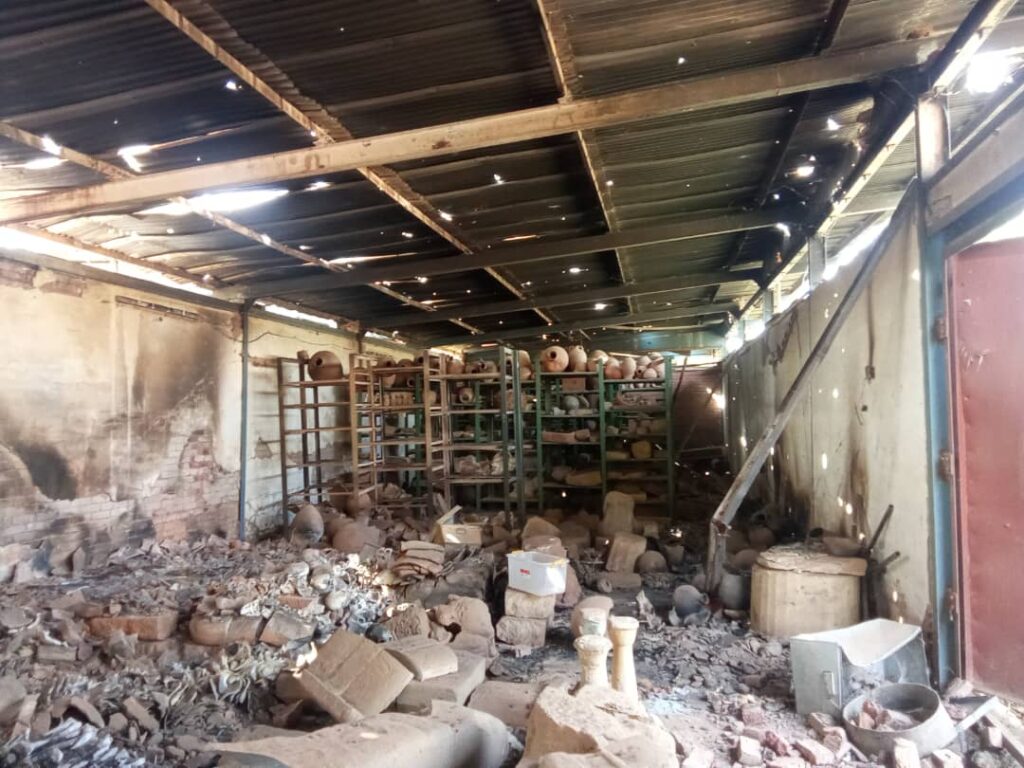By Mrs. Huda Magzoub Al-Bashir, Senior Curator of the Sudan National Museum, Khartoum (status: 14th Oct. 2025)


Mechanisms for protecting museums and antiquities in Sudan
The mechanisms for protecting museums and antiquities in Sudan are divided into two parts:
Firstly: The mechanism for protecting the building with its contents. This is further divided into two parts in terms of importance:
1. Archaeological, historical, and heritage buildings, where preservation is more important and requires greater care and caution. This also includes museums and field museums.
2. Museum collections, archaeological, historical, and heritage collections, whose preservation depends on the preservation of the building in which they are displayed, after careful selection of the site, method, and materials of construction, and the importance and concern of the state in doing so.
Secondly: The state’s mechanism for paying attention to museums, antiquities, and heritage, as a symbol of national sovereignty and identity, and any negative interference with it requires swift and necessary response.
Prior planning:
Establishing a museum under state sponsorship requires prior planning to protect it from internal and external threats and to adopt a sound and effective method for preserving it.
Mechanism based on supporting national security awareness to protect antiquities and museums and the right to swift intervention through those in charge of managing museums, antiquities, and heritage in Sudan, by following pre-planned methods to protect archaeological collections in museums and rescue them to safe areas or routes.
Mechanism for preserving museum collections:
This mechanism is the primary work mechanism in this field and is represented by:
– Museum collections themselves, in terms of collecting, restoring, documenting, displaying, publishing, preserving, and making copies of them.
– In this context, when feeling insecure, relying on the experiences of some countries that have previously preserved the originals of collections, antiquities, and artifacts in safe places and displayed copies of them to avoid theft or attacks, even if it requires returning them to the ground or to secret storage until safety is ensured.
Insurance mechanism through security agencies recognized and approved by the state to protect museums, antiquities, and heritage in Sudan.
These security agencies must receive adequate training to qualify them to preserve and protect collections and their locations, including museums.
Armed defense mechanism:
This mechanism is only allowed to be used in case of an attack on museums or their contents. It requires a deadly defense by specialized agencies to do this work and make the security of museum facilities part of national security.
Avoiding exposure of archaeological museums and their heritage to looting:
To avoid exposure of museums with rare archaeological collections to looting, especially in cases of armed threat, requires prior efforts based on:
– The state’s interest in its heritage and collections, whose loss would affect the state’s dignity, strength, and prestige.
– Several aspects and methods can be followed to avoid exposure of museums, antiquities, and museum collections to looting, theft, and aggression:
1. Increasing and developing insurance and its methods, according to modern techniques of theft, and benefiting from the experiences of other countries.
2. Addressing and cutting off corruption in all aspects related to the management of museums, antiquities, and heritage in Sudan.
3. Financial preparedness can play an important role in avoiding exposure of museums to looting, by providing the necessary resources for protection and security.
4. Working continuously to raise cultural awareness of the importance of museums, especially among security agencies, and instilling a sense of national duty to defend this heritage.
5. Seeking international cooperation and assistance from organizations concerned with protecting museums, antiquities, and heritage worldwide.
6. Establishing laws and deterrent penalties that must be put in place in agreement with the state and adopted internationally in case of exposure of museums, antiquities, and national heritage to looting, especially by armed parties.
